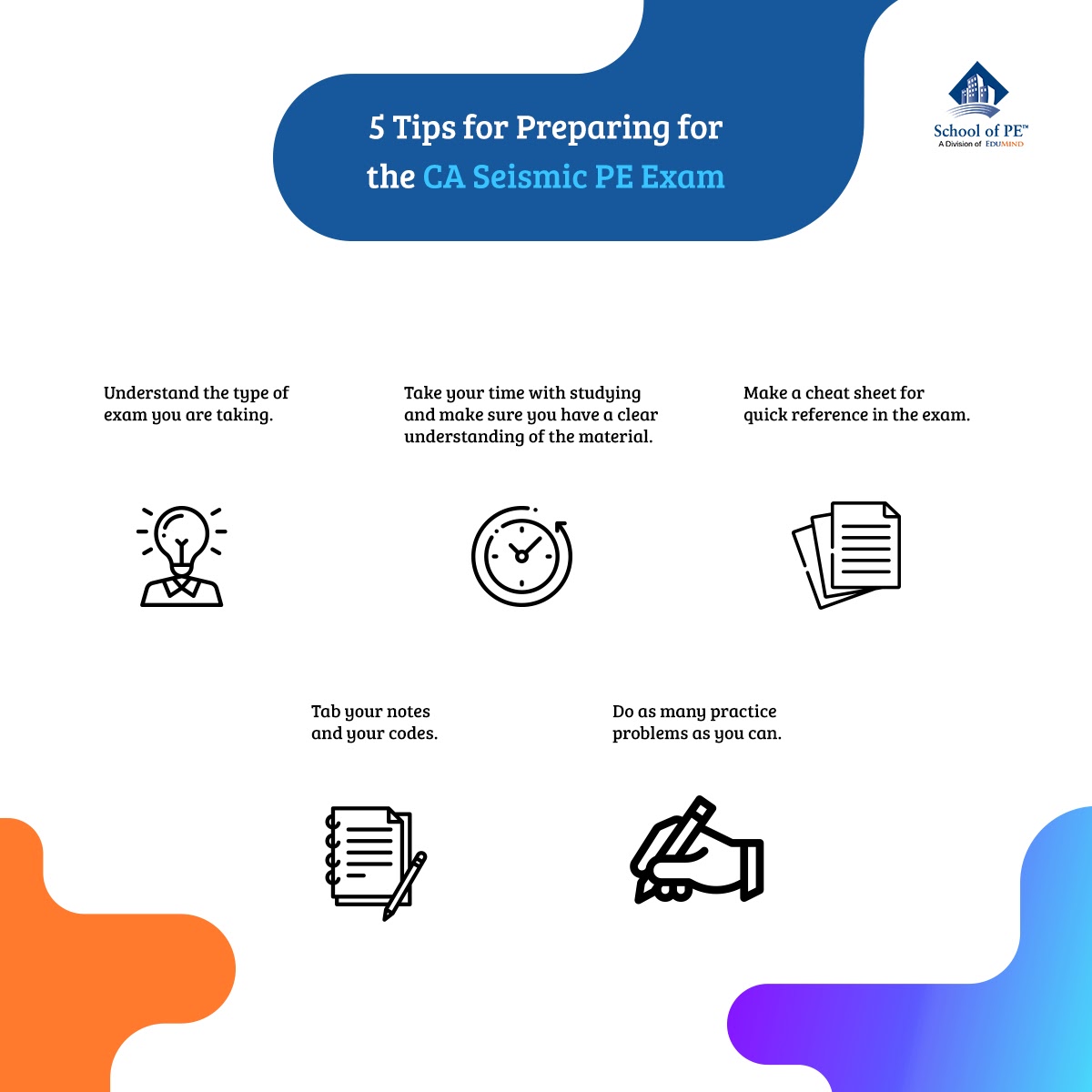Table of Contents
1. Understand the type of exam you are taking.
I say this all the time when people ask me about the exam - it is not the same type of exam as the national P.E. exam. It is not long. It is not slow. You do not really have time to look things up in your review book. Finally, it is much more problem and calculation oriented than definition oriented.
When I took the national exam (which, to be clear, I am not saying is easy), I remember feeling like the biggest thing I needed to know was where to look for the answers. From there, assuming a basic understanding, I would have time to read a paragraph or two to gain some specific knowledge and then answer the question.
This is not the way the seismic exam works. You won't have time to gain any knowledge during the exam -- You just have time to identify the proper equation, write it down, and plug it in to your calculator.
2. Take your time with studying and make sure you have a clear understanding of the material.
Unless you are already working in seismic engineering, this may be the first time you're really learning about seismic loading. It is completely different than gravity loading, so make sure you take the time to truly understand it. As I said above, you won't have time to learn new things during the exam, so don't set yourself up for that expectation.

3. Make a cheat sheet for quick reference in the exam.
When I was studying, I realized I was using a lot of equations equal to "F". Diaphragm forces, story shear, wall anchorage forces, base shear - the list goes on. One of the most valuable things I took into the exam was a list of all of those equations in one place, so I could easily reference them.
I would strongly urge you to pull together a cheat sheet with definitions and key equations. If you don't have the time or aren't sure what to include, you can one pre-made online. They actually sell some that will fit in to a binder, so that it can be considered "bound" per the board rules. I borrowed one of these from a co-worker for the exam and used it countless times.
4. Tab your notes and your codes.
This is my number one tip for all open-note exams, especially this one due to the speed of the exam. You can save a lot of time by having organized notes and tabs.
5. Do as many practice problems as you can.
This tip is last on this list, but it does not mean it's the least important! Doing as many problems as you can is key to discovering "tricks" and common errors, as well as being able to quickly identify which equations and parameters to use.
No comments :
Post a Comment